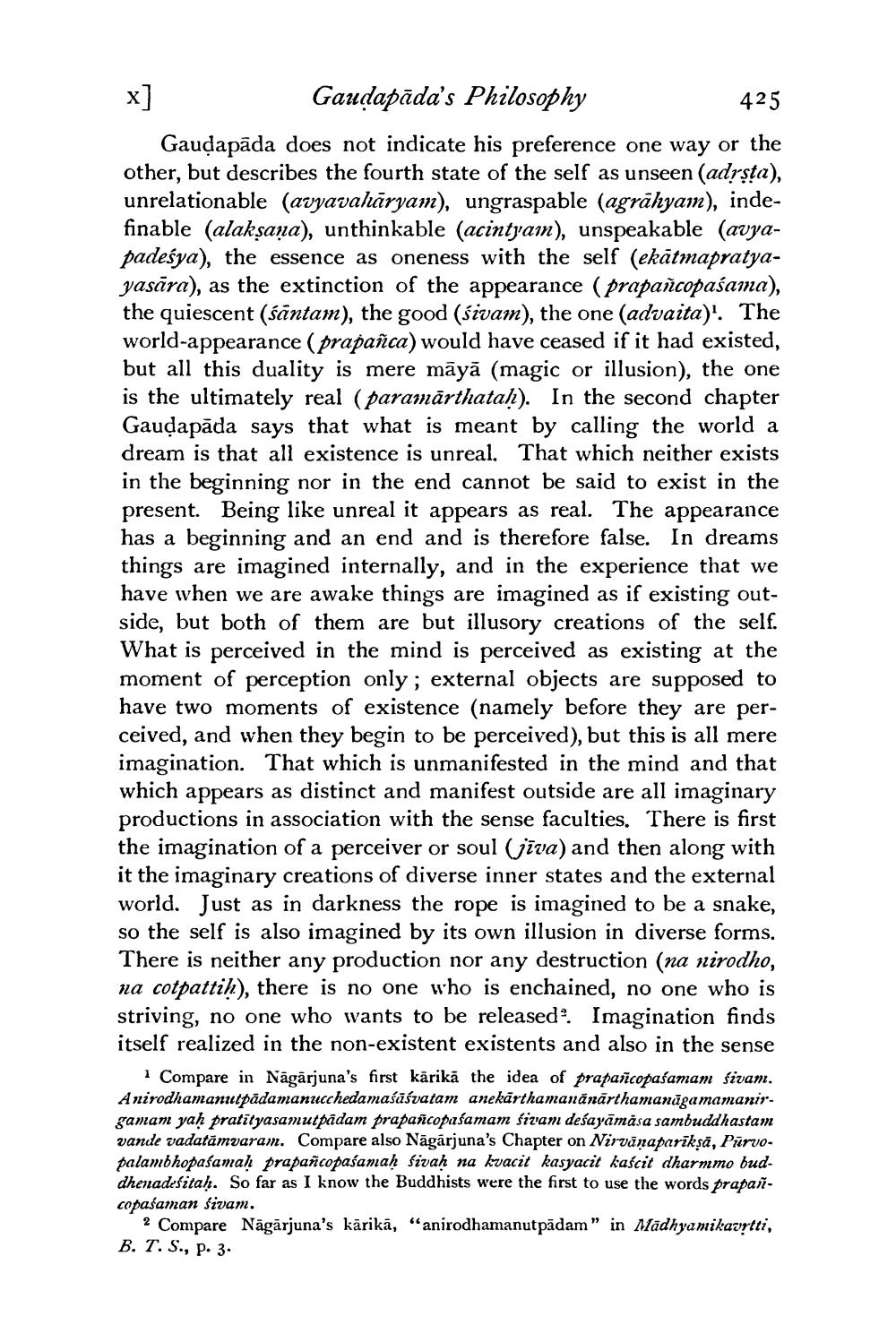________________
Gaudapāda's Philosophy
425 Gaudapāda does not indicate his preference one way or the other, but describes the fourth state of the self as unseen (adrsta), unrelationable (avyavahāryam), ungraspable (agrāhyamn), indefinable (alaksana), unthinkable (acintyam), unspeakable (avyapadeśya), the essence as oneness with the self (ekātmapratyayasāra), as the extinction of the appearance (prapağcopaśama), the quiescent (śāntam), the good (śivam), the one (advaita)'. The world-appearance (prapanca) would have ceased if it had existed, but all this duality is mere māyā (magic or illusion), the one is the ultimately real (paramārthata!). In the second chapter Gaudapāda says that what is meant by calling the world a dream is that all existence is unreal. That which neither exists in the beginning nor in the end cannot be said to exist in the present. Being like unreal it appears as real. The appearance has a beginning and an end and is therefore false. In dreams things are imagined internally, and in the experience that we have when we are awake things are imagined as if existing outside, but both of them are but illusory creations of the self. What is perceived in the mind is perceived as existing at the moment of perception only; external objects are supposed to have two moments of existence (namely before they are per ceived, and when they begin to be perceived), but this is all mere imagination. That which is unmanifested in the mind and that which appears as distinct and manifest outside are all imaginary productions in association with the sense faculties. There is first the imagination of a perceiver or soul (jīva) and then along with it the imaginary creations of diverse inner states and the external world. Just as in darkness the rope is imagined to be a snake, so the self is also imagined by its own illusion in diverse forms, There is neither any production nor any destruction (na nirodho, na cotpattih), there is no one who is enchained, no one who is striving, no one who wants to be released. Imagination finds itself realized in the non-existent existents and also in the sen
Compare in Nāgārjuna's first kārikā the idea of prapanicopaśamam sivam. Anirodhamanutpādamanucchedamaśāśvatam anekārthamanănārthamanāgamamanirgamam yah pratityasamutpädam prapancopaśamam sitam deśayāmasa sambuddhastam vande vadatāmvaram. Compare also Nāgarjuna's Chapter on Nirvānapariksa, Purvopalambhopašamah prapancopaśamah fivah na kvacit kasyacit kaścit dharmmo buddhenadesitah. So far as I know the Buddhists were the first to use the words prapascopasaman sivam.
2 Compare Nāgārjuna's kārikā, "anirodhamanut pādam" in Madhyamikavrtti, B. T. S., p. 3.
palambhopatamvaram. Comidam prapanicom anekārtkama,




